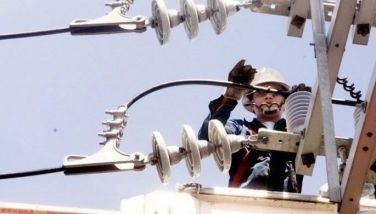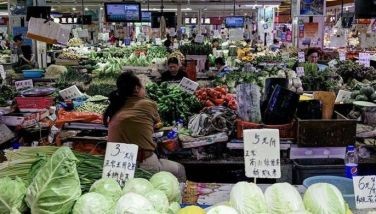COVID-19 vaccine

The good news is there are two vaccines about to complete the steps needed to determine efficacy and safety. The Pfizer and Oxford vaccines are more or less expected to be ready for prime time late this year or early next year.
And not a moment too soon as the world once again tries to cope with infection rates setting new records, hospitals nearing over-capacity, and economies struggling to reopen. There are now more than 50 million cases worldwide.
The US has surpassed 10 million cases.Europe’s second wave is about to eclipse the severity of the first, and much of Europe is now going into another lockdown. People are not happy, but what else can they do as hospitals are once more swamped with COVID-19 patients.
On the bright side, if you can call it one, Dr. Anthony Fauci told CNN that Pfizer was able to get results so quickly because the pandemic was so bad.
“An answer depends on the size of the trial and how many infections there are in the community. This was a trial that was geared to 44,000 people and we are in the middle of a major surge right now.
“Those two things together make it much more likely that you’ll get an answer quickly, which is what happened. We got an answer quickly,” Dr Fauci said.
The Pfizer vaccine was found to be more than 90 percent effective in preventing COVID-19 in participants without evidence of prior SARS-CoV-2 infection in the first interim efficacy analysis.
The study enrolled 43,538 participants, and no serious safety concerns have been observed. But protocol demands the collection of additional safety and efficacy data.
Pfizer said in a press statement that “submission for Emergency Use Authorization (EUA) to the US Food and Drug Administration (FDA) planned for soon after the required safety milestone is achieved, which is currently expected to occur in the third week of November…
“The case split between vaccinated individuals and those who received the placebo indicates a vaccine efficacy rate above 90 percent, at seven days after the second dose. This means that protection is achieved 28 days after the initiation of the vaccination, which consists of a two-dose schedule.
Even if they are not done with their clinical trials, an Australian company has started to make doses of Oxford University’s vaccine. The company, CSL, is making about 30 million doses of the Oxford-AstraZeneca vaccine, even as it is still going through phase-three clinical trials.
The results from these trials won’t be known until the end of the year. If they’re positive, the vaccine will still need to get approval from regulators. CSL’s chief scientific officer Andrew Nash says the company is “hopeful” the gamble will pay off.
“We are getting closer to, but we are not there yet,” Andrew Pollard, director of the Oxford Vaccine Group, said.
Pollard told British lawmakers that establishing whether or not the vaccine worked would likely come this year, after which the data would have to be carefully reviewed by regulators and then a political decision made on who should receive it.
But experts agree the chances of a vaccine that would wipe out the coronavirus next year are “very slim.”
Vaccines may not be as effective in older people because an aged immune system does not respond as well to immunization. Yet older people are most at risk. Experts say we see this every year with the flu.
“If you are looking for a magic wand, you won’t find one in vaccines,” said Dr. William Schaffner, a professor of preventive medicine and infectious disease at Vanderbilt University Medical Center in Nashville, Tennessee. “That said, vaccines will play a substantial role in reducing the epidemic.”
An approved vaccine doesn’t mean it will be available to people quickly. The process of making vaccines is complicated, and so is distribution.
Adding to the logistical complexity is the need for many of the vaccines to be shipped and stored at super-low temperatures. The COVID-19 vaccines being developed by Moderna Inc. and BioNTech and Pfizer Inc. will require stringent standards for refrigeration that may make distribution in Third World countries like ours very difficult.
Moderna’s coronavirus vaccine requires a storage temperature of negative four degrees Fahrenheit. BioNTech and Pfizer’s, need to be stored in negative 94 degrees Fahrenheit.
“These conditions could be met at tertiary hospitals and laboratories, and could be accommodated in intensive one-day vaccination events at such sites, but this would still only cover a fraction of the healthy population,” a pharmaceutical company official said.
It will be very difficult for community clinics and local pharmacies to store and administer. Pfizer will need to use ultra low temperature freezers and thermal shipper storage for its COVID-19 vaccine, according to comments made by Dr. Nicholas Kitchin, senior director of Pfizer’s vaccine clinical research and development group.
Maybe our officials should start sourcing the freezers we will need to store and distribute the vaccines. Maybe local companies like Concepcion Industries could be tapped to lead in the development of this special type of freezer.
The vaccine may also be very late in arriving here. Vaccine czar and national task force chief implementer Carlito Galvez Jr. said last Monday that supplies of a COVID-19 vaccine would most likely arrive in the Philippines by the end of 2021 or in early 2022, owing to a lack of global supply.
This was confirmed by President Duterte last Tuesday when he revealed that the Philippines has not been able to make reservations for the vaccines because other countries have already made reservations way ahead of us.
It is not a question of money, Duterte said, because we can raise that.
So, when will we get some vaccines? Duterte: “How long? In due time. It’s not that we don’t want to buy. There’s still nothing for us to buy.”
Hmm. It seems our DOH and IATF officials were sleeping on the job and didn’t reserve way ahead of time like what other countries did. Natutulog sa pansitan, as police reporters would put it.
This means we will have to continue using masks, maintaining social distance, and frequently washing our hands for a long while more.
Boo Chanco’s e-mail address is [email protected]. Follow him on Twitter @boochanco
- Latest
- Trending































